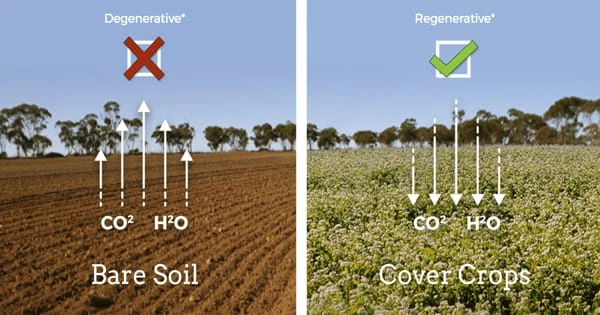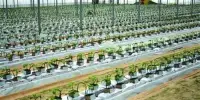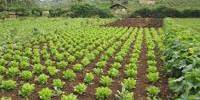Regenerative agriculture is a conservation and restoration approach to food and farming systems. It is a holistic approach to farming and land management that attempts to repair and improve the health of the soil, the ecosystem, and agricultural systems while also meeting the requirements of current and future generations.
It focuses on topsoil regeneration, increasing biodiversity, improving the water cycle, expanding ecosystem services, supporting biosequestration, increasing resistance to climate change, and enhancing farm soil health and vitality. It goes beyond sustainable agriculture by actively attempting to regenerate ecosystems, improve soil health, increase biodiversity, and improve the overall resilience of farming systems.
Regenerative agriculture is not a distinct discipline in and of itself. Instead, proponents of regenerative agriculture combine a number of sustainable agriculture practices. Practices include recycling as much farm waste as possible and using composted material from outside sources.
On small farms and gardens, regenerative agriculture is frequently based on philosophies such as permaculture, agroecology, agroforestry, restoration ecology, keyline design, and holistic management. Large farms are also increasingly implementing such strategies, which frequently employ “no-till” and/or “reduced till” practices.
Key principles and practices of regenerative agriculture include:
- Soil Health: Using strategies such as limited tillage, cover cropping, and composting to build and maintain healthy soil. Plant development, nutrient retention, and carbon sequestration all require healthy soil.
- Diverse Crop Rotation: Using a variety of crop rotations to interrupt pest and disease cycles, increase soil nutrient cycling, and reduce the demand for synthetic fertilizers and pesticides.
- Cover Crops: Planting cover crops, which are non-commercial crops such as legumes or grasses, to cover and protect the soil when cash crops are not planted. These cover crops can help improve soil organic matter and nitrogen fixation.
- Livestock Integration: Integrating livestock into cropping systems, such as rotational grazing, to mimic natural ecological processes and improve soil fertility.
- Agroforestry: Combining trees or woody shrubs with crops or livestock to provide multiple benefits, including increased biodiversity, improved soil health, and diversified income sources for farmers.
- Holistic Management: Using a holistic approach to decision-making that considers the entire ecosystem, including social and economic factors, to create regenerative farming plans.
- Water Management: Implementing strategies to conserve water, such as rainwater harvesting, efficient irrigation systems, and contour farming to reduce soil erosion.
Soil health improves, which reduces input requirements while increasing crop yields because soils are more resistant to harsh weather and house fewer pests and pathogens. It helps to reduce climate change by removing carbon dioxide from the atmosphere and sequestering it.
Regenerative agriculture is viewed as a solution to the environmental problems connected with typical industrial farming, such as soil deterioration, biodiversity loss, and greenhouse gas emissions. Regenerative techniques, according to proponents, can assist address these issues while also increasing the long-term viability and resilience of farming systems.
















